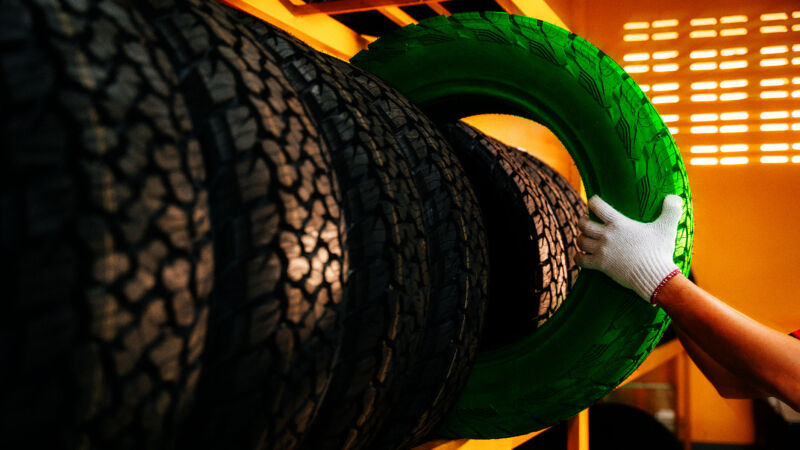
Aurich Lawson | Getty Images
One of the biggest promises of electric vehicles is that they offer relative freedom from constant car maintenance. Gone are oil and filter changes, spark plugs, tune-ups, diesel particulate filters, diesel exhaust after-treatment fluid and countless other parts that need to be replaced. There isn’t even so much as an exhaust clamp to deal with.
Well, a funny thing happened on the way to gas-free driving. The last piece connecting the car to the road is still a tire and it still bends. It uses air and needs to be replaced every now and then. And the requirements an engine has for traction, load and noise are quite unique when that engine is humming quietly. There’s no getting around it: EVs need EV-specific tires.
How do tires for electric cars differ? We spoke to several tire manufacturers to better understand what ingredients go into the tire oven in the first place and what development testing proved before the tires hit the street.
Yes, tires intended for vehicles with a conventional internal combustion engine (ICE) will fit the wheels of your EV car, but it would be a bad idea to use them this way. Tires intended for electric cars are designed to withstand, among other things, the extra weight, dynamic load and traction of an electric car. Using non-EV tires is likely to lead to much faster wear, heat-related issues and the possibility of wheelspin from a standstill, which, even with traction control, could potentially cause a loss of directional stability.
Weight and load
There are some fundamental differences between ICE cars and EVs even before either car moves. In general, EVs are heavier than an ICE car of similar size or similar rating. For example, the curb weight of the electric Mercedes-Benz EQS 450 4Matic is 2,539 kg, while the ICE S500 4Matic weighs only 2,091 kg. These cars are not on the same platform, but they are the same size class and in the same general segment. The EV is almost 454 kg heavier due to the simple fact that batteries weigh a lot. The weight problem will improve over time, but for the foreseeable future, the basic construction of the tire carcass must be able to withstand such a heavy load.
Many people think that only a tire’s rubber compound or polymers can affect traction and grip. But in addition to these compounds, the tread pattern, the depth of the tread blocks and the void volume between them also contribute to major changes in a tire’s overall stiffness and load capacity.
On the plus side for static load distribution, that prodigious battery weight is often evenly distributed, front to back, in the EV. However, every silver lining has a cloud. If that weight were centralized in a much smaller footprint in the center of the car, it would benefit the car’s dynamic mass during braking, cornering and acceleration. A long, wide battery won’t help an electric car once it’s moving and changing direction quickly. And since the car is a moving beast, the tire’s dynamic carrying capacity should be more than up to the task. That means structural rigidity under that EQS’s 5,597 lbs, not just when stationary, but also under braking, cornering and acceleration.

